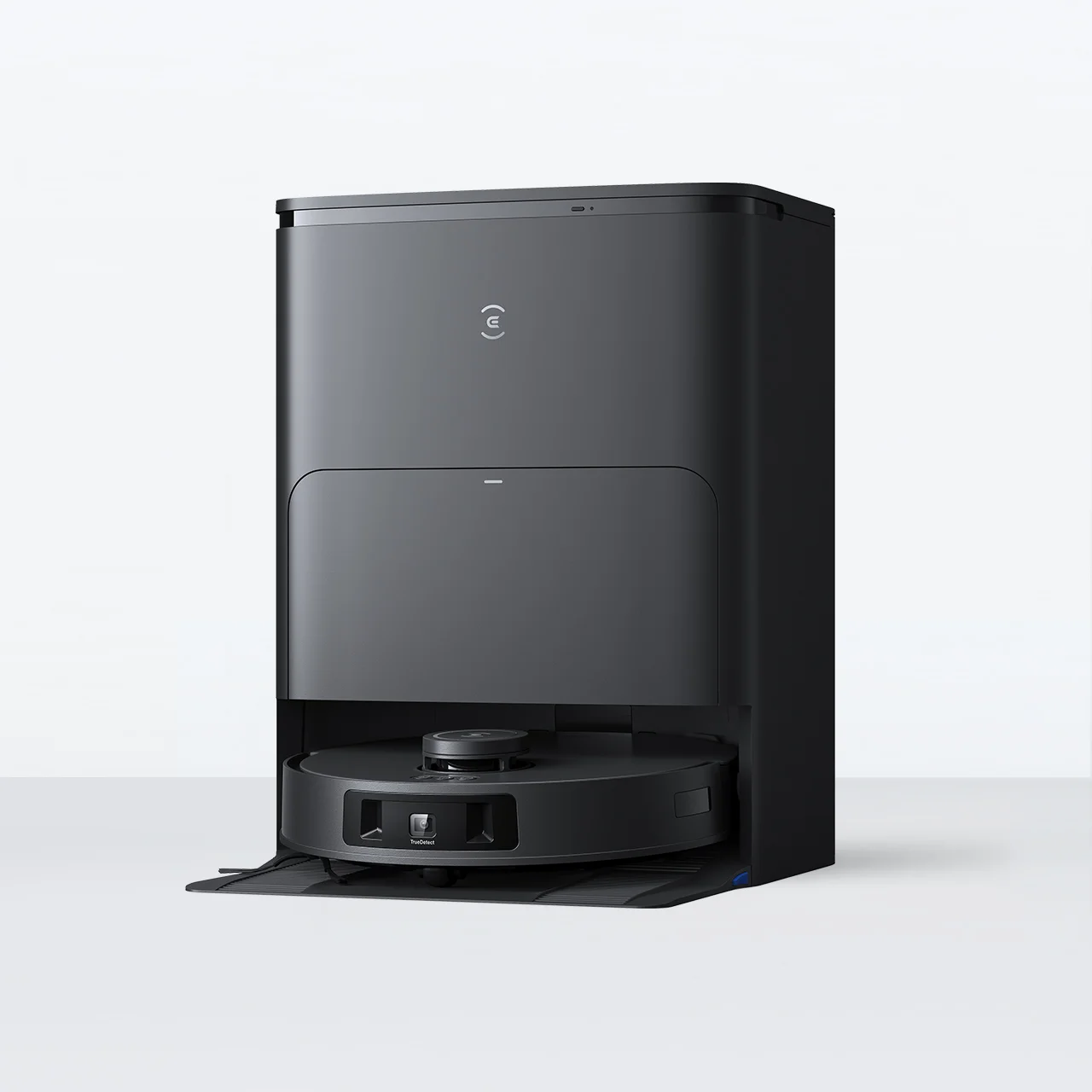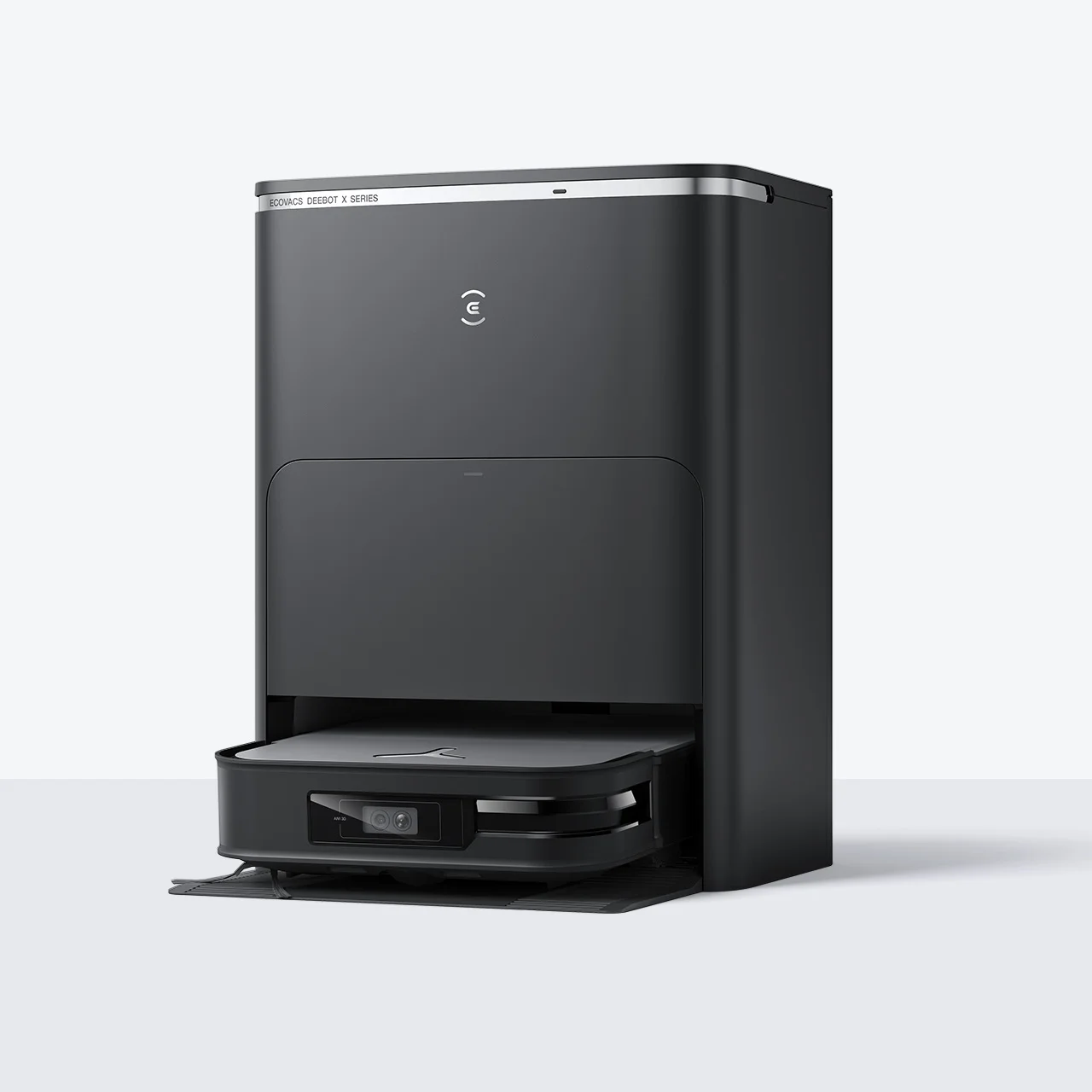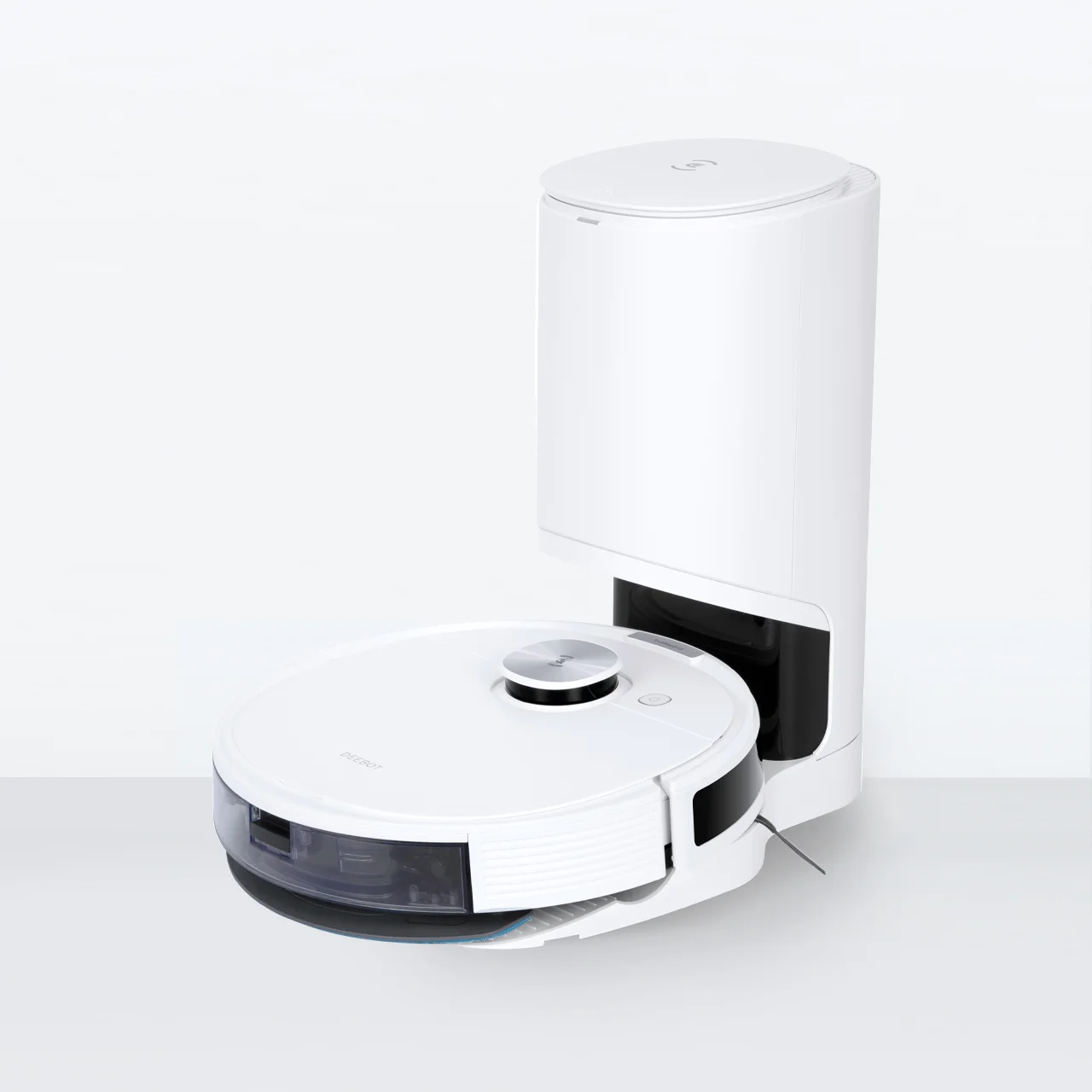
Robot vacuums are one of the most popular household gadgets in the United States right now, with 70% of American consumers owning one in their home. It's easy to see why – they’re convenient, efficient and most of all, take the hard work out of cleaning.
Unlike traditional vacuums that require manual effort and a constant power source, like canister vacuums, upright vacuums and cordless vacuums, robotic vacuum cleaners offer a convenient cleaning experience. Designed for hands-free operation, the automatic vacuum cleaner uses sensors, motors, and algorithms for intelligent navigation and clean. They map your home, clean based on your preset schedule, and return to their charging station when the battery is low or the job is done. Their simple, intuitive interfaces further make it user-friendly for the elderly, people with disabilities, or those who find the app difficult to use.
If you're considering investing in one, now it’s time to learn how a smart vacuum works to suit your needs.
What Is A Robot Vacuum?
A robot vacuum is an autonomous device that vacuums floors with minimal manual intervention. Equipped with sensors and advanced technology, these compact, smart gadgets scan the environment and clean floors independently. Some models even come with mopping functions, voice assistants, and self-emptying docking stations.
The first patent for a robot vacuum was filed by American engineer Donald G. Moore, but it wasn't until 1996 that Electrolux released the Trilobite, the first commercial robot vacuum. Despite its navigation issues, it paved the way for the industry.
Since the early 2000s, various brands, including us at ECOVACS, have introduced advanced robot vacuum models, revolutionizing home cleaning over the past two decades.
How Does a Robot Vacuum Cleaner Work?
A robot vacuum cleaner works using advanced sensors and technology to analyze its environment and a combination of roller brushes, side brushes, and mops to clean thoroughly; once the cleaning is complete, it returns to its docking station to charge and prepare for the next session.
The main components of a robot vacuum include:
● Motor: The motor acts as the heart of the robot vacuum. It generates suction power to pull in dirt, dust, and debris from floors, including those embedded in crevices and carpet fibers.
● Brushes: Smart vacuums use a combination of brushes to agitate and lift dirt from various surfaces like hardwood floors and laminate floors. Common types include roller brushes that prevent hair tangling and side brushes that scoop dust into the suction.
● Battery: Robot vacuums are powered by rechargeable batteries. When the power runs low, the robot automatically returns to the charging dock, and resumes cleaning where it left off once recharged.
● Docking Station: The docking station is the home base of the robot vacuum. Other than charging, some multifunctional ones can empty the dustbin, clean mop pads, and refill the water tank, getting the vacuum ready for the next cleaning task.
● Mop: Robot vacuums with mopping capabilities can perform dual tasks in one charge, reducing the need for separate appliances and manual effort. They apply constant pressure on mop heads to effectively remove stubborn stains.
● Sensors: Modern robot vacuums use various sensors for different purposes: Laser-based and infrared navigation sensors create virtual maps and plan cleaning routes; obstacle detection sensors help avoid cords, furniture, and walls; and cliff sensors prevent the vacuum from tumbling down stairs by detecting sudden drops and changing direction.
What Navigation Technology Do Robot Vacuums Use?

Robot vacuums utilize sophisticated sensors, algorithms, and navigation technology to create efficient cleaning paths, and they no longer rely on random navigation that bumps into objects and leaves missing spots.
Sensors
Robot vacuums use various sensors for navigation. Common ones includeinfrared sensors that detect obstacles and help the vacuum avoid collisions. Laser sensors, such as LiDAR, use technology found in aerospace and self-driving cars to create detailed maps of the environment, while camera-based sensors capture images to identify and avoid objects.
Mapping
Information from these sensors is then processed with mapping algorithms to generate a virtual map of your home. This map guides the vacuum to clean systematically while avoiding missed or repeated spots. It also allows you to send the cleaning robot to a specific area with a simple tap on your phone.
Obstacle Avoidance
During the cleaning session, obstacle avoidance technologies can effectively identify and work around furniture, pets, and other obstacles in real time, providing a thorough clean without causing damage. For instance, DEEBOT's TrueDetect 3D uses structured infrared light patterns to precisely identify and navigate around objects.
What Are The Cleaning Features Of Robotic Vacuums?
Robot vacuums’ cleaning performance relies on suction mechanisms and brushes, mopping capability, object identification technology, customizable settings and pet mode.
Suction Power & Brushes
Suction power is measured in Pascals (Pa), with higher power indicating more efficient dirt pick-up. Brushes, including roller brushes and side brushes, make collection easier by agitating and lifting dirt from surfaces.
Mopping
Many robot vacuums also come with mopping functions. A good example is DEEBOT's OZMO Turbo 2.0 Rotating Mopping System, which applies consistent pressure with a super absorbent fabric mop to tackle stubborn stains.
Object Identification Technology
To distinguish dirt from household objects, object identification technology, such as ECOVACS' AI-powered AIVI software, is trained to recognize a variety of obstacles like cables, shoes and pet waste, and it learns from experience to improve navigation over time.
Customizable Cleaning Settings
In terms of flooring types, robot vacuums offer customizable settings for you to adjust suction power and water flow for different surfaces. On hard floors, they can sweep and mop simultaneously. On carpets, higher suction power effectively remove dirt, with premium models like DEEBOT X2 OMNI feature Auto-mop Lifting technology to keep carpets dry.
Pet Mode
For pet owners, specialised pet modes detect and avoid pets and their accessories, cleaning around them without disturbance. Introducing your pet to the vacuum in quiet mode helps them adjust to the new device without stress.
What Smart Features Do Robot Vacuums Have?

Robotic vacuum cleaners have user-friendly smart features including remote control, smart home system integration, scheduling and customization option and self-emptying.
Remote Control
Robot vacuums come with simple, intuitive interfaces, remotely controllable via buttons or a mobile app. When away from home, you can start, stop, or schedule cleaning sessions with just a few taps. Advanced models let you customize cleaning routes, set no-go zones, or focus on specific areas. Voice commands are also supported. By integrating with smart home systems like Alexa and Google Home, making it easier for the elderly, people with disabilities, or those who prefer not to use the app.
Scheduling & Customization
Another smart features that promotes automatic cleaning is scheduling and customization. Simply set a cleaning schedule, and the machine does the rest. You can preset schedules based on the time of day or set triggers with smart home systems, such as starting the vacuum when you leave home in the morning. Customize the cleaning settings for each room if needed.
Self-emptying
Self-emptying robot vacuums, like those with OMNI stations, clean automatically at their docking station. They empty the dustbin, clean and blow-dry the mop pads, and refill the water tank while charging. The debris is stored in a larger bin at the station, which you only need to empty every 30–60 days1. For allergy sufferers, this setting traps allergens without being released back into the air.
How to Set Up a Robot Vacuum Cleaner?
To set up a robot vacuum, make sure it’s fully charged and connected to the app and Wi-Fi, then let it map your space and start cleaning. Here’s a general step-by-step setup guide:
- Charge the vacuum cleaner: Start by fully charging the robot vacuum cleaner, especially if it’s the first time you’re using it.
- Download the app: Download the companion app on your phone or tablets and follow the instructions to connect it to your robot vacuum.
- Connect to Wi-Fi: Connect the robot vacuum cleaner to a Wi-Fi network, allowing it to communicate with the app and enable automatic software updates.
- Map your house: Let your device scan and map the house. This helps it understand where the objects are and plan where it can go. Do not pick it up during the mapping process or else it will lose track of information.
- Set up the cleaning schedule: Preset a cleaning schedule that fits your needs, whether it's a one-time clean or several times per week. Proper scheduling allows your robot vacuum cleaner operates efficiently based on your preferences.
How to Choose the Right Robot Vacuum Cleaner for Your Needs?
Choose a robot vacuum based on your budget, size of space, cleaning requirements and noise tolerance level, when you’re ready to invest in a smart vacuum.
Budget
It is essential to consider how much you are willing to spend on your robotic vacuum cleaner. Generally speaking, the costs depend on the cleaning abilities, smart features, variety of functions and overall quality of the robots.
Size & Layout
Think about your home's size and layout. For larger homes and houses with multiple floors, it is beneficial to have an automatic vacuum that can store different maps so you can use them on different floors. Also, to avoid potential damage, check if the machine is capable of cleaning various floor surfaces, as different surfaces may have specific care needs.
Noise level
It's always a good idea to check the noise levels, especially if you have babies or pets at home, or need a quiet environment to work and conduct online meetings. As a benchmark, noise above 80 dB is considered undesirable and may disturb your peaceful living space.
Cleaning performance
Cleaning performances can be compared based on suction power and mopping systems. Also, the navigation and mapping ability determines whether it can clean your home thoroughly without missing spots. If you have pets or children, sophisticated obstacle avoidance features are a must to prevent collisions and damage. To enhance its performance and longevity, clean and maintain the vacuum regularly.
FAQ
How do robot vacuums know where to go?
Robotic vacuum cleaners navigate using a combination of sensors, cameras, and advanced mapping technology. They create digital maps of your home, detect obstacles, and use algorithms to plan efficient cleaning routes for thorough coverage.
How to use a robot vacuum cleaner?
To use a robot vacuum cleaner, charge it fully and connect it to your app, let the device map the space and you can start cleaning or set cleaning schedules via the app right away. Empty the dustbin and clean regularly for optimal performance.
How does a robot vacuum know when it's done?
Robot vacuums determine they're done cleaning when they've covered the entire mapped area, reached their programmed cleaning time, or when their battery is low. They then return to their charging station automatically.
Disclaimer(s):
- 30 to 60 days: This data comes from ECOVACS laboratory, which is based on the statistics of the number of times users disposed of traditional dustbins. The actual performance is subject to change due to frequency and cleaning area. DEEBOT X1 PLUS, T10 PLUS come with 3.2L disposable dust bag.
Related Products









